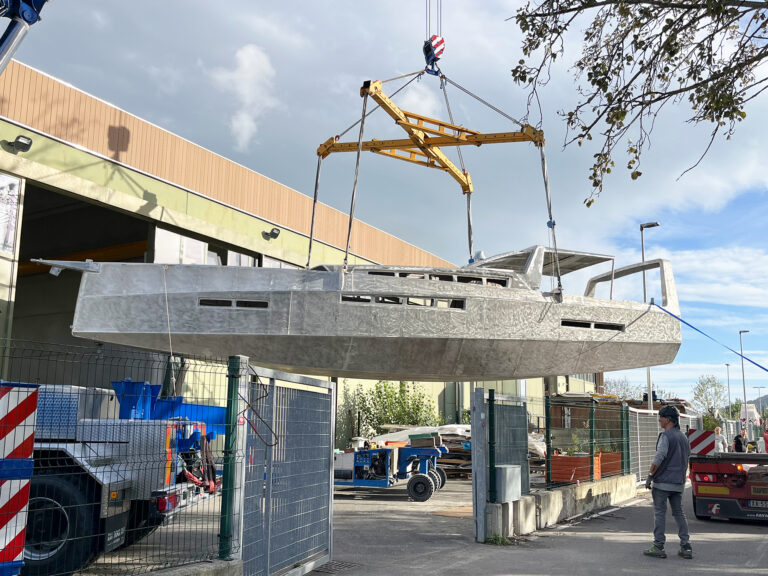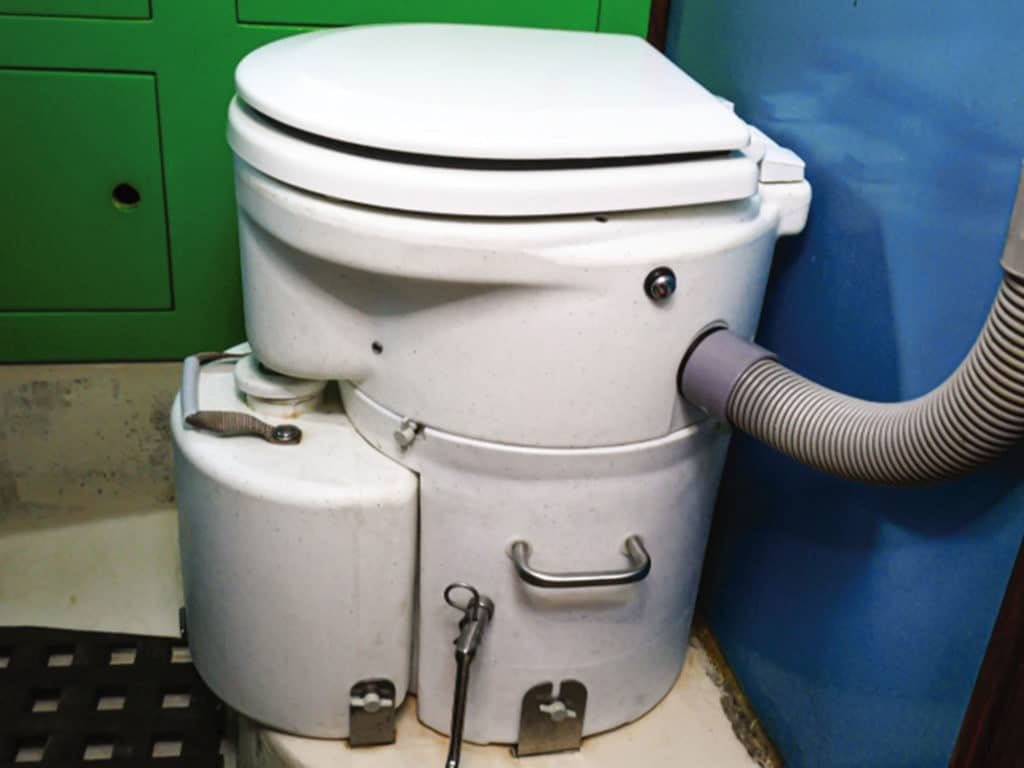
I first got a whiff of the composting-toilet trend a couple of years ago when my Instagram feed exploded with stories of cruisers replacing their regular marine toilets with modern composting versions. It didn’t even occur to me that one day we would join the composting-toilet movement too. Then, after 10 years of trouble-free use, we started getting blockages in the head.
This new development, along with a pervasive “toilet funk” in the cupboards—not so much stale salt water but an odor more like a dirty public bathroom—led us to believe that after a decade, the hard sanitation hose that connected the toilet discharge to the overboard seacock had deteriorated. But we also needed to address another fault in the system: the lack of a reasonable-size holding tank.
When we bought Kate, our 1973 Newport 41, in 2008, the seller had recently installed a holding tank to comply with US Coast Guard regulations. The undersize 5-gallon holding tank may have been compliant, but it didn’t have the capacity to keep up with everyday use. Since none of the authorities in the 13 countries we have sailed to ever inquired about our holding tank, this hadn’t been an issue.
However, our next stops were Borneo and Malaysia, where marina stays would be possible and regulations are reportedly followed. A functioning holding tank would be necessary. As we drew straws to decide who got the job of jumping overboard to snake the discharge through-hull, and hopefully free the blockage, we decided it was finally time to find a solution to our toilet troubles.
A Composting Toilet?
So what, exactly, is a composting toilet? Simply put, it’s a type of sanitation system that does not use water to dispose of human waste. This “dry” system promotes decomposition through controlled aerobic conditions, or composting. Unlike a port-a-potty or chemical toilet, composting toilets separate liquid and solid waste, which speeds up decomposition and reduces odors. To control moisture content and further aid in odor elimination, urine-diversion dry composting toilets (UDDC) line the solids tank with a naturally sourced medium such as coconut coir or peat moss. As well, most units vent to the outside via a small extraction fan and ductwork.
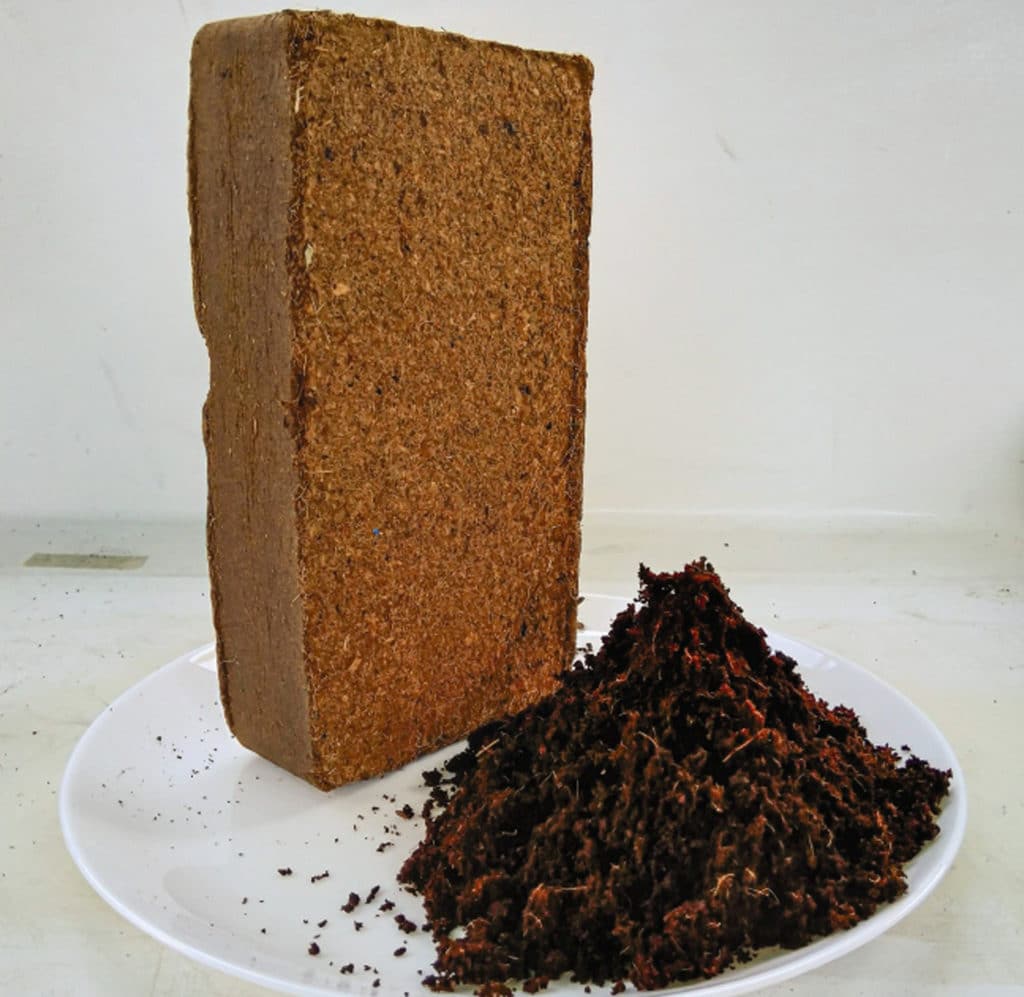
The two most popular brands of UDDC toilets on the market today are Nature’s Head and Air Head. Both are constructed from ABS plastic and are similarly priced ($925 and $1,030, respectively, online) but vary slightly in overall design. We decided on the Air Head for two main reasons. First, the toilet seat is both the same size and shape as our previous marine toilet. We hoped that this would give the user a feel that we were accustomed to. Second, the design of the Air Head makes it possible to remove the liquid tank without opening the solid tank. This thoughtful design feature alone makes it preferable to the competition. Add the smaller footprint and a lack of sharp corners, and the Air Head seemed like the perfect fit for our boat.
The Installation
Installing our Air Head composting toilet was extremely easy. Due to its compact size, we were able to place the unit where our original toilet had been mounted, without modifying any cabinetry. Our only stumbling block was that our traditional ceramic toilet was mounted on a raised pedestal to bring it up to a standard user height, 14 inches from floor to seat. To accommodate the built-in solids tank, the Air Head measures 19 inches from floor to seat. This “comfort height” is installed in wheelchair-accessible stalls in public bathrooms. When we placed the Air Head on top of our raised pedestal, it measured 25 inches from floor to seat. This elevation made it feel more like you are perching on the edge of the toilet rather than sitting squarely atop it. We investigated removing the pedestal but quickly discovered that it concealed the curve of the hull. Removing it would give us a few inches but not a level surface. We continued with Plan A and waited to see if the toilet height would be a pain in the butt. Literally.
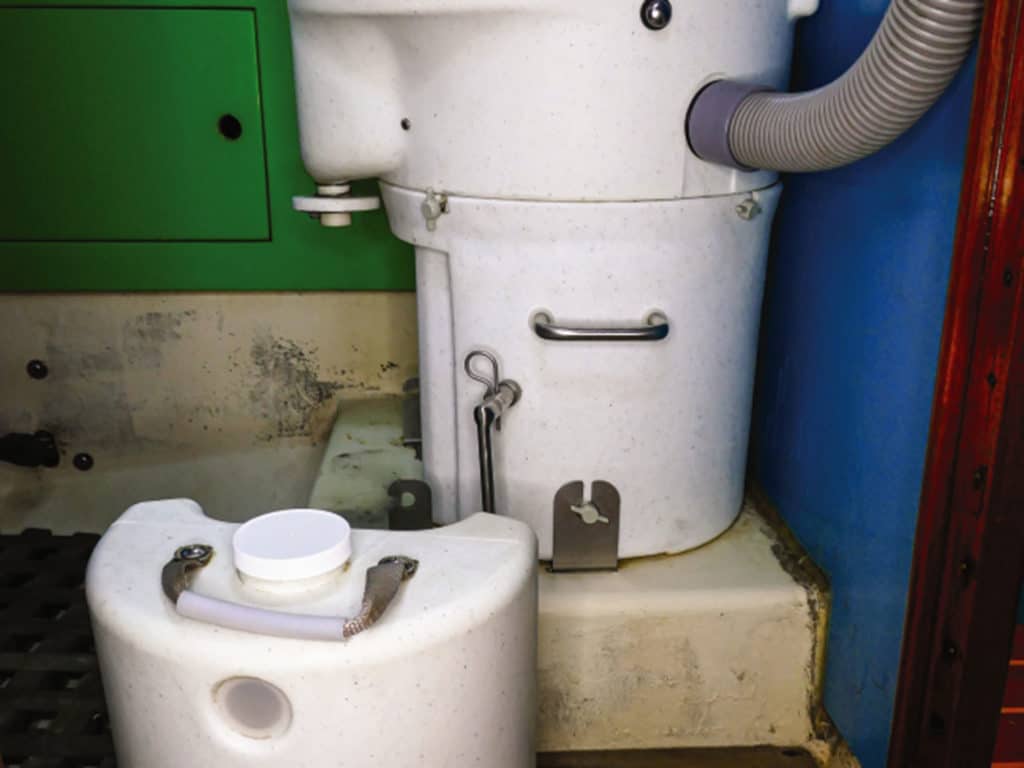
The Air Head toilet is held in place with four simple stainless-steel brackets. Screwed down to the floor, the brackets capture bolts on the sides of both the solid and liquid tanks, which tighten down with simple wingnuts to secure the toilet in place. The only other thing to do is run the ventilation hose and wire in a small fan.
Included with the Air Head is a short length of flexible hose and a ventilation cam, which houses the fan. To avoid cutting more holes in the boat, we chose to repurpose the solar vent in the cabin top, which had failed the season before. It was still necessary to run wires to the 12-volt fan, but with the exterior housing of the solar vent in place, the exhaust fan was weather-protected.
Our installation isn’t winning any design awards, but it took less than an hour and didn’t require any structural modifications—a rare bragging point when discussing boat projects. Besides, when it comes to toilets, function is more important than aesthetics. After installation, there is only one thing you need to do to prep the Air Head for use: Add the coconut coir to the solids tank.
Prepping for Use
Coconut coir is a natural, renewable product made from coconut husks. Sold at garden centers mainly as a growing medium, it is readily available worldwide. Coconut coir comes in dry, compressed blocks that are reconstituted with water, making them easy to store. A single 10-by-4-by-2-inch block will fluff up to about 8 liters of mulch. The Air Head comes with one coconut coir brick, but we have found that using one and a half bricks creates a better starting volume. Add too little coconut coir, and there won’t be enough to cover the waste when you “stir” it after use; add too much, and you are taking up valuable space in the tank.
RELATED: Sailing Totem: A Frank Discussion of Marine Heads
When working with a natural product, it’s important to remember that no two bricks will be the same, so it is difficult to state the exact amount of water needed. However, the instructions say that the coconut should be hydrated into a “moist sawdust-like consistency” that resembles “damp crumbly earth” but should not look “muddy.” It is also important to consider that the coconut coir will absorb moisture from the solid waste when the toilet is in use. So, as we found out the hard way, erring on the side of dry is preferable.
Using the Toilet
The Air Head toilet bowl looks strangely small and shallow, and we wondered if it would work as claimed. Not surprisingly, the designers put a lot of thought into the shape and function of the toilet, and I am happy to report that we’ve had no troubles at all after six months of daily use.
Other than remembering to flip the handle to open the trap door to the solids tank before use, and to stir the solids after use using the crank on the side of the tank, the Air Head functions the same as a standard toilet. There is no splash back when you pee, and the urine is neatly diverted into the liquids tank. Similarly, the size of the opening to the solids tank worked fine. No mess, no fuss.
After use, I usually wipe down the basin with a bit of toilet paper and use a little spritz of diluted vinegar every couple of days just to keep things tidy. Between uses, keep the gasketed lid closed. Easy. The only trouble we encountered was a noticeable odor for the first week or so of use. This was not the “pleasant earthy” smell as often described in reviews of composting toilets, but rather a definite manure stink wafting from the vent. Happily, adding a handful of dry coconut coir to the solids tank remedied the issue. Less moisture equals less odor.
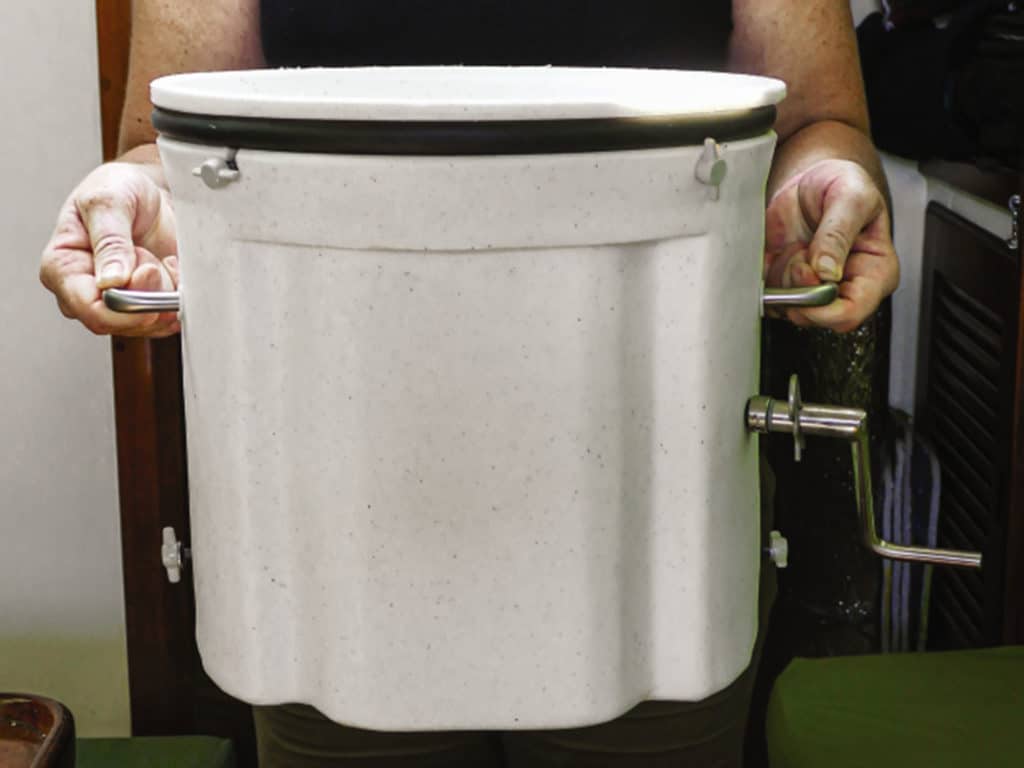
Emptying the Toilet
A composting toilet is a closed system that requires the solids and liquids tanks to be emptied regularly. The liquids tank has a small, opaque sight glass at the top, which indicates when it is full. Removing the liquids tank is as simple as backing off two wingnuts and slipping out the tank. A screw-on cap is supplied to ensure a dry run to the dump location. The amount of people on board and frequency of use will dictate how often the tank needs to be emptied.
As expected, urine that sits in a tank for a few days will be a bit smelly, so a good rinse after emptying is necessary. Do not use bleach to clean the liquids tank because chlorine and the ammonia in urine combine to create a very toxic chloramine gas. A simple soap-and-water wash will suffice. After several weeks of use, the tank can accumulate crystalline deposits. Adding a handful of rice or dried beans to the wash cycle is enough to knock off any scale.
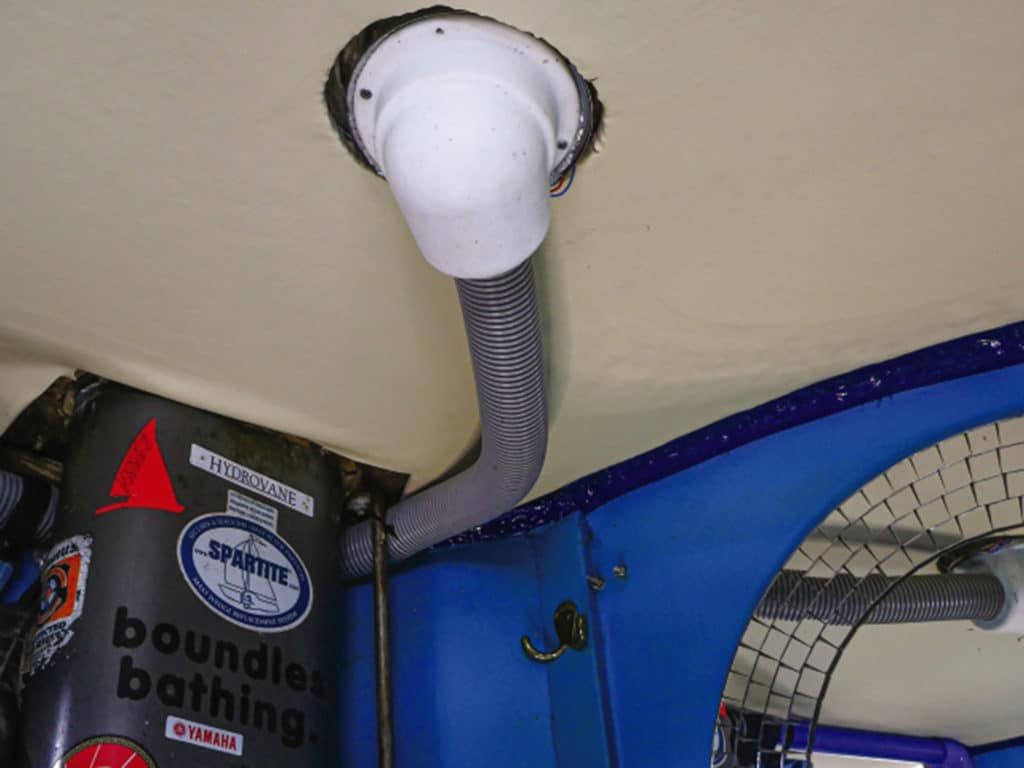
I must admit that I wasn’t sure what to expect the first time I prepared to empty the solids tank. The manual describes it as the “highlight of the tour,” and although I think that’s a bit of hyperbole, it was not completely unpleasant. We did get the estimated 60 uses into the tank before it needed to be emptied, but even when full, it did not smell when opened and was more loamy compost than toilet tank.
The seat is removed by easing off four wingnuts, turning the top slightly, and separating the bowl from the solids tank. A flat lid, which locks in the same way, is included to seal the tank for transport. The whole tank is removed from the mounting brackets and taken to a dump site. Because all the solids are organic, they can be dumped into a sewage system or disposed of like a soiled diaper. There is no need to rinse the solids tank. In fact, it is good to have a little organic matter clinging to the sides because this will kick-start the next composting process. As well, Air Head includes a small packet of enzymes that can be added to the solids tank to boost decomposition if things seem slow.

Final Thoughts
We installed the Air Head toilet in February 2020 while we were on the hard in the Philippines. Weeks later, before we had a chance to relaunch, the COVID-19 pandemic shut down the world. At press time, I have been stranded in the boatyard, alone and on board, for several months and counting. I can’t tell you how much I appreciate having a private, functioning, odor-free, comfortable toilet that works while the boat is out of the water.
The Air Head is considered a Type III Marine Sanitation Device, which means that we are now compliant with the international IMO MARPOL 73/78 regulations. Between the ease of installation, maintenance-free use, and peace of mind knowing that we can use the head anytime and anywhere, our composting toilet is one of the best upgrades we’ve ever done on board.
Heather Francis is from Nova Scotia, Canada, and has lived and worked on boats throughout the world. Since 2008, she has been sailing aboard Kate, a Newport 41, with her Aussie partner, Steve. They are currently in the Philippines. Follow them at yachtkate.com.








